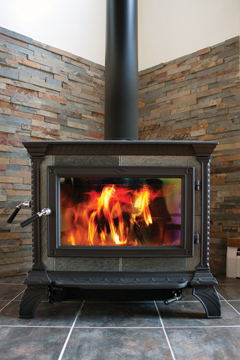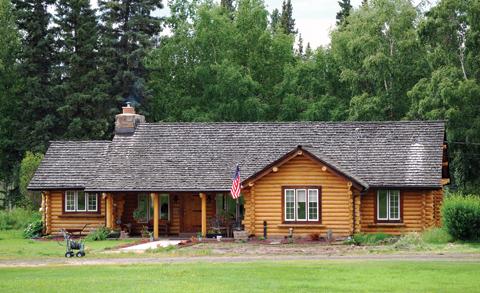For just about anyone who considers building a log home, setting a budget is a necessity. Matching the home to the budget requires preparation, understanding, and, often enough, a reality check.
When the time comes at long last to build the log home of your dreams, every aspect of construction, financing if needed, and ancillary expenses such as furnishings, homeowner’s insurance, and property taxes should be considered. It pays to think comprehensively on the front end, determining just how much initial and ongoing expense is practical.
“If a mortgage is required, get preapproval first. This will tell you how much you have to put down in equity and how much you can borrow,” asserts Tom Vesce, retired president of Log Cabin Homes in Rocky Mount, North Carolina, and currently a consultant to the log home industry. “You have to start with a total budget. How much do you have or want to budget for the total project? If you have a limited budget, you may want to purchase a less expensive building lot.”
“You may want to allocate budgets within the master budget to rooms, features, and certain areas of your home,” Tom continues. “For example, you may want to have a ‘wow’ master suite or a gourmet kitchen or a grand living room. So, you can allocate budgets for each room, with some features and areas of the house having larger budgets and others having smaller budgets.”
Brad Neu, co-owner of Montana Log Homes in Kalispell, Montana, advises, “Be realistic in what you can or want to spend on your log home, and don’t be afraid to convey this information to your designer and potential builders. Too often clients will be adamant about what they want and later find out it will cost much more.”

Photo by ARENA Creative
Garrett Brownell, production manager at Hiawatha Log Homes in Munising, Michigan, also has a decade of experience in sales. Discussion of the construction budget has always been a priority for him.
“If the customer doesn’t bring up cost during the initial conversation, I will,” he reasons. “The way I handle the budget question is with a simple formula. Assuming you own the land and that a builder will finish the home, the minimum cost is $150 per square foot, and that can easily go to $250 if items in the estimate are upgraded to something more expensive. You have to consider every aspect and assign a dollar amount—everything from plumbing to heating and air conditioning, electrical wiring, floor coverings, and kitchen cabinets.”
Using Brownell’s math, the construction cost of a new 1,500-square-foot log home can run $225,000 and easily surpass $350,000.
Neu considers a lower cost estimate a common error among consumers. “Many people have the misconception that any home can be built for $100 per square foot,” says Neu. “While it is true that some fairly simple designs can be completed for that, the reality is that the vast majority of custom log homes tend to run much more.”
Brownell takes it a step further. He comments, “People have the perception that a log home is cheaper than traditional construction. I say that is true if you cut the logs and do most of the work yourself. In reality, it is not an inexpensive option.”
While Brownell points out that there is no substitute for quality materials, he suggests that the design is an important factor in cost savings. The big rectangle with one big roof on it is the most economical, he offers. Vesce says that all vinyl windows rather than clad-over-wood windows and a thermo-steel entry door in lieu of a fancy, expensive one can help with cost.
Neu relates that the fireplace is a good place to save some bucks. “There is a multitude of ways to get the charm of a fireplace,” he says, “from a full masonry stack with real stone veneer to a simple freestanding wood stove. Now, you can argue that there is a definite difference in quality, but each will allow you to sit by the fire! My other advice would be to do some shopping. Quite often, with a bit of research you can find identical items, such as windows, doors, or cabinets of the same brand, for lower cost from different suppliers.”
Navigating the challenges of log home construction requires an investment of money, time, and patience. Those who prepare their plan of action thoroughly and execute it as closely as possible find real satisfaction in the process and the result.

